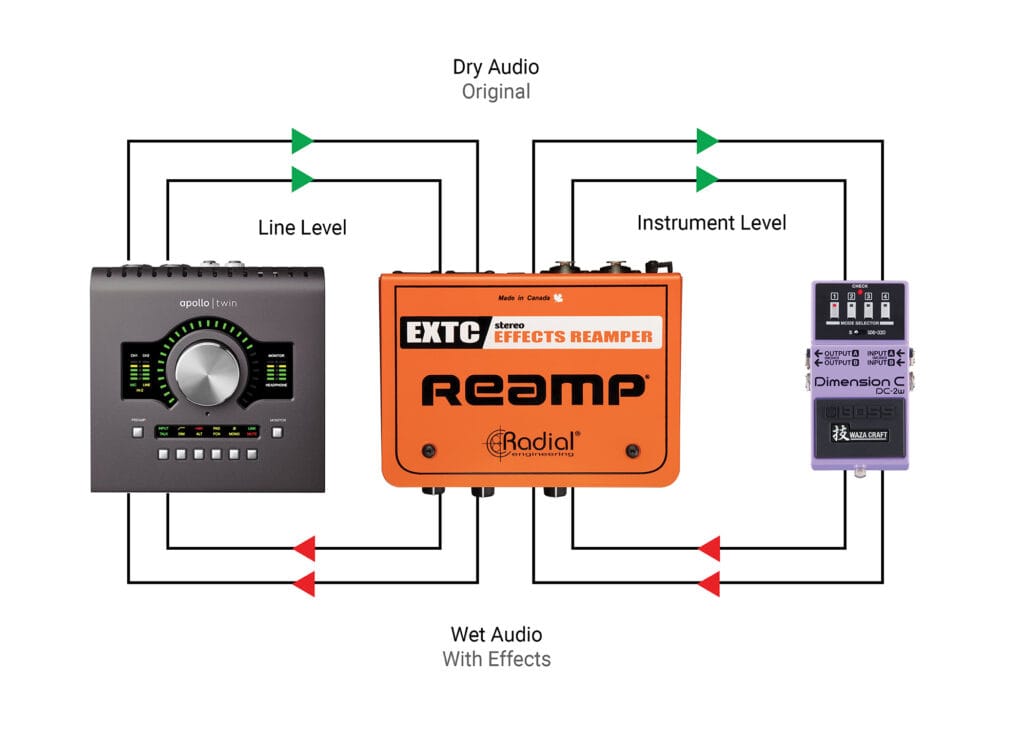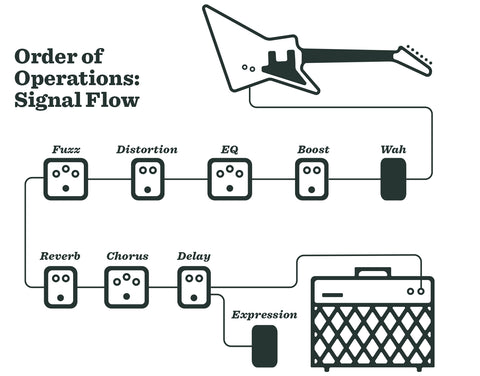

Got The Time?Īs my colleague Sam Hill said back in Issue 141, “You can think of buffers as tone police: They exist to protect and serve your guitar’s core sound quality.”


So if you want that classic, Blackface opto-trem, you’ve got to run the tremolo later in the chain.īut again, whether it’s tremolo, flanging, chorus, phasing or vibrato-experimentation is key. Running tremolo between your delay and reverb pedals is the key to getting the pulses to dominate your sound in the same way as they would in a amplifier circuit. Side Note: I want to take a second to talk specifically about tremolo, because there’s a solid argument for placing it later in the chain-which is where I like to run mine. Generally speaking, if you want to retain as much of that lush swirl as possible, you’ll want to place your modulation before your drive or fuzz pedals because placing them after will yield more intense sounds. This usually happens when I get an itch for that Van Halen-esque jet plane flanging-and you need to have distortion in front of the flanger for that. Now, I’m not a huge swirly modulation user, but when I do have it going, I prefer to run it after fuzz, distortion and overdrive pedals. If you’ve made it this far, you’ve probably picked up on the theme that a lot of pedal arrangement comes down to personal preference. Side Note: Some fuzz pedals don’t get along very well with any kind of a buffer in front of them, so that may change your placement plan a bit. Find out what you can really do with what you’ve got. I’ve stacked low-gainers into high-gainers for escalating gain tones-and vice versa-and most every other three-pedal combination you can imagine. It’s a pretty sleek setup, but I’ve done it several other ways in the past. Following those I have a low gain drive that I can use by itself, or for boosting and shaping the other two. On my board, I run a Marshall-in-a-box type platform pedal for rhythm and then stack a fuzz pedal into it for the best lead tones I’ve ever had. But how you do it should depend on both what you want to achieve and what sounds best to you. I’ve done it both ways with great success. Others will vehemently declare the exact opposite.

Some will swear that you should run low gain into high gain. And finding the right order comes down to personal preference. Most pedal junkies I know have at least two gain pedals on their board-often more. But if you’re looking for the basics, well-here we go. And since we all have different ears and different approaches to playing, I’d strongly encourage that you experiment and figure out what sounds best to you. Often, depending on the circumstances, conventional wisdom can be unwise. Sometimes best practices aren’t the best.
#Guitar effects signal path how to
But today, for those of you who may be in the nascent stages of your pedal journey, I’m going to take a step back and offer some conventional wisdom and best practices on how to set up your pedalboard.īut be aware-this effort comes with a gigantic caveat: I might be wrong. But too often, I fear, we here at Tone Report cater only to a certain type of reader-one with at least a rudimentary knowledge of effects. Now, it’s fairly safe to assume that if you’re reading this publication that you’re interested in guitar pedals. The other part screams “USE YOUR EARS! PLUG THE DAMN THINGS IN AND FIND OUT FOR YOURSELF!” Part of my brain remembers a time when I first began experimenting with effects and probably asked a similar question on a similar message board. Such an inquiry invariably creates dissention in my head. It usually goes something like-which order should these effects go in? Every so often I see the same question pop up on one of several guitar forums I frequent.


 0 kommentar(er)
0 kommentar(er)
